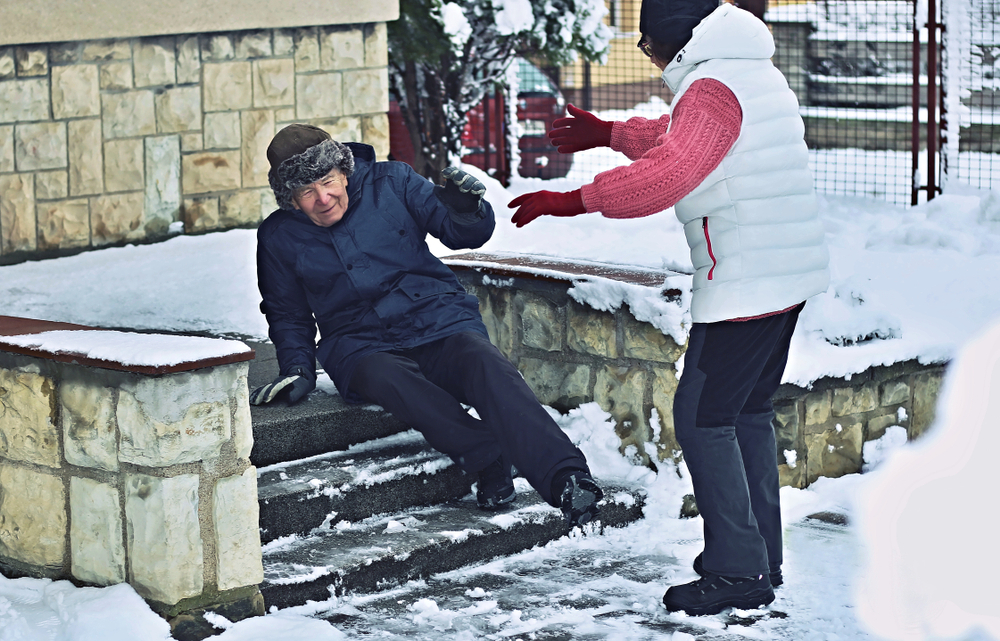Make an Appointment
This blog explores the role of occupational therapy interventions for incarcerated individuals, highlighting how OTs support rehabilitation, functional skill development, and community reintegration within correctional settings.
Correctional facilities are designed for safety and containment, however, rehabilitation and human dignity must also remain central goals. Incarcerated individuals often experience a range of occupational challenges: disrupted routines, limited autonomy, trauma histories, and a lack of meaningful activity. This environment can lead to occupational deprivation, reduced mental wellbeing, and difficulty transitioning back into the community after release.
Occupational therapists (OTs) in correctional settings provide essential support by helping individuals rebuild functional life skills, cope with stress, engage in positive routines, and prepare for reintegration. Their work blends clinical insight with a deep understanding of institutional systems and social justice.
Crucially, occupational therapy recognises that incarceration impacts more than just liberty, it affects a person’s ability to participate in daily life with purpose and agency. Without structure, skill-building, and engagement, individuals may return to the same cycles of dysfunction that contributed to offending in the first place. OT aims to break that cycle through meaningful occupation and long-term behaviour change.
In this blog, we examine how OT interventions are delivered in prisons, remand centres, and other custodial environments. From emotion regulation programs to vocational skill-building, these interventions aim to reduce recidivism, promote recovery, and support meaningful participation in life, both inside and outside the prison walls.

What Is the Best Therapy for Inmates?
There is no one-size-fits-all answer to this question. Rehabilitation in correctional settings must be multidisciplinary, trauma-informed, and client-centred. However, occupational therapy offers a unique and essential contribution.
Unlike therapies that focus solely on behaviour, cognition, or medication, OT addresses the everyday routines and functional skills that enable someone to live a healthy, law-abiding life. These include cooking, hygiene, communication, stress regulation, and time management, skills that are often disrupted by incarceration or past trauma.
Why OT is critical for inmate rehabilitation:
- Incarcerated individuals often experience occupational imbalance, with restricted access to meaningful and purposeful activity. OTs create engagement opportunities that promote wellbeing and reduce behavioural issues.
- Many inmates have a history of trauma, poverty, marginalisation, or mental illness. OT provides strengths-based, practical support for developing resilience, structure, and self-determination.
- OT can bridge the gap between institutional behaviour and community functioning, helping clients prepare for reintegration.
OT is most effective when integrated into a broader therapeutic team that may include psychologists, social workers, and correctional staff. The best therapy for inmates is one that is holistic, goal-directed, and grounded in real-world skill-building, which is precisely where occupational therapy excels.

What Are Examples of Occupational Therapy Interventions?
Occupational therapy (OT) in correctional settings goes beyond traditional rehabilitation, it helps incarcerated individuals rediscover purpose, build routine, and prepare for life after release. The prison environment can foster occupational deprivation, where people lose access to meaningful roles, habits, and engagement. OT interventions are designed to counteract this by promoting function, self-regulation, and reintegration.
Here are some common and effective OT interventions for individuals in custody:
1. Life Skills Training
OTs support individuals in learning or relearning essential Activities of Daily Living (ADLs) and Instrumental Activities of Daily Living (IADLs). These include:
- Personal hygiene and grooming routines
- Basic meal planning, preparation, and safe food handling
- Time and money management skills
- Navigating transport systems or making appointments (for re-entry planning)
This training is particularly valuable for inmates preparing for community reintegration, especially those who’ve been institutionalised for extended periods.
2. Emotional Regulation and Coping Strategies
Many incarcerated individuals have experienced trauma, mental illness, or adverse life events. OTs deliver interventions to:
- Improve emotional awareness and expression
- Teach grounding, mindfulness, and breathing techniques
- Develop healthy coping mechanisms for stress, anger, or anxiety
- Build sensory regulation strategies using movement, music, or creative expression
These supports are especially useful in high-stress environments such as remand centres or solitary confinement units.
3. Routine and Time Use Planning
A lack of structure can lead to agitation, hopelessness, or behavioural issues. OTs help individuals:
- Establish daily and weekly routines
- Balance active and restful activities
- Create achievable goal plans
- Develop internal motivation and responsibility
This planning can improve mental wellbeing during incarceration and support smooth adjustment post-release.
4. Vocational and Pre-Employment Skills
OTs help individuals prepare for workforce re-entry by building:
- Communication and interpersonal skills
- Task planning and sequencing
- Resume writing and interview preparation
- Confidence for vocational training or employment placement
This may include simulated job tasks, role-play, or group programs focused on workplace behaviours.
5. Social Skills and Leisure Exploration
OTs facilitate group sessions and individual interventions to:
- Improve conflict resolution, turn-taking, and active listening
- Support identity building through leisure activities (e.g. art, sport, writing)
- Reduce social isolation by developing prosocial engagement
Structured leisure can provide positive outlets and replace high-risk behaviours or boredom-based agitation.
6. Re-entry Preparation and Community Integration
As release approaches, OTs support clients in:
- Building community resource knowledge (housing, employment, health services)
- Practising real-life tasks in a controlled setting
- Developing realistic daily plans for post-release adjustment
- Addressing fears or anxieties related to transitioning into the community
Occupational therapy gives individuals the tools to rebuild routines, regain self-determination, and find safe, meaningful roles beyond incarceration.

What Are the Most Successful Methods of Rehabilitating Prisoners?
Rehabilitation in correctional settings is most effective when it addresses the root causes of offending, not just the crime itself. The most successful approaches are evidence-based, person-centred, and designed to equip individuals with the skills and mindset needed to re-enter the community safely and meaningfully.
Occupational therapists (OTs) are integral to this process, providing practical interventions that foster independence, self-regulation, and routine. Their work complements broader rehabilitation efforts by focusing on what individuals do day-to-day—and how those habits affect long-term outcomes.
1. Addressing Criminogenic Needs
Criminogenic needs (like substance use, poor coping skills, and lack of employment) must be tackled to reduce reoffending. Effective rehabilitation programs work to:
- Replace antisocial habits with prosocial routines
- Develop meaningful roles (e.g. student, worker, caregiver)
- Strengthen emotional regulation and impulse control
- Break cycles of poverty, isolation, and trauma
OTs play a key role in helping clients identify daily patterns that contribute to reoffending and replace them with safer, structured behaviours.
2. Personalised, Goal-Oriented Interventions
Rehabilitation is most impactful when it’s tailored to the individual’s goals, abilities, and risks. OT assessments help identify:
- Functional skill gaps (e.g. budgeting, planning, social interaction)
- Environmental barriers (e.g. lack of housing or access to services)
- Meaningful roles and motivations to support change
Therapists then create structured, achievable goals that promote self-efficacy, giving individuals a reason to invest in their own recovery.
3. Skills for Daily Life and Community Reintegration
Prisoners often lose or never develop essential life skills. Rehabilitative programs that rebuild these skills, like cooking, hygiene, navigating transport, or using technology, greatly improve post-release outcomes. OT-led interventions can simulate real-world challenges and prepare individuals for daily demands.
For example, someone nearing release might work with an OT on managing a weekly calendar, grocery planning, and role-playing job interviews.
4. Emotional Regulation and Mental Health Support
Many incarcerated individuals have untreated trauma, mood disorders, or emotional dysregulation. OTs work alongside psychologists and caseworkers to:
- Develop healthy coping strategies
- Reduce reliance on aggression or shutdown behaviours
- Support sensory regulation in overstimulating environments
These skills are critical for successful reintegration and reducing violent or impulsive incidents.
5. Routine, Time Use, and Meaningful Occupation
Idle time in prison is a major risk factor for behavioural issues and reoffending. Structured use of time, through education, hobbies, work, and therapy, gives individuals a sense of agency and productivity.
Occupational therapy promotes:
- Positive leisure activities (e.g. writing, art, fitness)
- Prosocial routines and daily structure
- Internal motivation and responsibility
6. Continuity of Support Post-Release
Successful rehabilitation doesn’t end at the prison gates. OTs support transition planning by:
- Connecting individuals to housing, employment, and healthcare
- Teaching how to navigate systems like Centrelink or public transport
- Developing relapse prevention plans and daily living routines
- Coordinating with community service providers and NDIS supports
Programs that provide wrap-around services after release have the greatest impact on reducing recidivism.
Ultimately, rehabilitation succeeds when individuals are given the tools, support, and belief that they can build a better life. Occupational therapy brings that vision into practical, daily reality.

What Are Intervention Approaches in Occupational Therapy?
Occupational therapy uses five evidence-based intervention approaches, all of which can be applied within correctional settings to support rehabilitation:
1. Create/Promote
This approach enhances performance by developing new routines or environments without focusing on deficits. In correctional OT, this might include creating a structured daily routine that supports stability and wellbeing, even for inmates without current difficulties. For example, introducing morning activity sessions to reduce restlessness during lockdown periods or establishing a prison-wide gardening group to promote positive identity.
2. Establish/Restore
Used to develop new skills or restore lost function. For example, teaching a newly incarcerated individual how to cook for themselves, or helping someone relearn money management after years of institutionalisation. Inmates with long custodial histories often require support to restore the functional competencies they had prior to imprisonment, or to establish them for the first time.
This approach is particularly beneficial in pre-release phases, where clients are encouraged to simulate real-world routines while still inside the structured environment of the facility.
3. Maintain
Focuses on preserving current functional abilities. In prisons, this may include exercise routines to prevent physical decline, continuing a coping strategy developed in therapy, or maintaining communication skills through structured social engagement.
OTs also help clients sustain motivation and engagement through long sentences by introducing variety, reflecting on progress, and refreshing goals, preventing institutional fatigue and disengagement.
4. Modify
Involves changing the environment or task to suit the individual. This could include adapting leisure activities for someone with a disability or providing low-stimulus activity options for individuals with sensory sensitivity. For example, an OT might help a neurodiverse client create a calming self-care routine within a high-stimulus block or advocate for access to ear protection or fidget tools.
Modification is also used for cultural appropriateness, ensuring interventions align with First Nations clients’ values and traditional activities wherever possible.
5. Prevent
Targets the risk of occupational dysfunction. This may include interventions designed to prevent recidivism, such as relapse prevention plans or lifestyle balance strategies. Preventive work also includes teaching stress management tools before a client enters high-risk situations (e.g. court appearances, transfers, or pre-release stressors).
This approach is vital in short sentences, where therapy time is limited but risk is high. Even small preventive interventions—such as establishing a support contact list or building a weekly planner—can have long-term impact.
OT Intervention Framework - American Occupational Therapy Association

Frequently Asked Questions (FAQs)
Where do OTs work with incarcerated individuals?
In jails, prisons, remand centres, youth justice centres, and community-based reintegration programs.
What types of issues do incarcerated individuals work on with OTs?
Self-care, anger management, coping with mental illness, vocational preparation, routine building, and community reentry skills.
Do OTs work in group or one-on-one settings?
Both. Group programs are common in correctional facilities, but high-risk or complex clients may receive individualised therapy.
Can occupational therapy reduce reoffending?
Yes. OT builds life skills, structure, self-awareness, and coping capacity, all of which reduce criminogenic risk factors.
How is correctional OT different from general OT?
It involves working within legal and security frameworks, balancing rehabilitation goals with risk and institutional requirements.

Final thoughts
Incarcerated individuals often face barriers that extend beyond legal consequences, they’ve lost structure, meaningful activity, and the ability to engage in valued roles. Occupational therapy offers a path to recovery, dignity, and reintegration.
By building functional skills, promoting safe habits, and supporting behavioural change, OT helps inmates reimagine their futures through participation, identity, and hope.
Next Steps
Call 1300 731 733 or book online to learn more about our occupational therapy services supporting correctional and community rehabilitation programs.
You can also:
- Read more OT articles on our blog
- Explore our Mental Health Occupational Therapy services
- Refer to us through your justice or community support program
- Include OT in NDIS pre-release or forensic recovery plans

Date Published: Tuesday, July 1, 2025
Locate a Occupational Therapy
Service Near me
Get the experience & convinence you deserve to support your or a loved one's allied health needs.
Our Occupational Therapy team are currently serving & taking appointments in the following states and regions in Australia:
Need to get into direct contact with ur Client Services team? We're all ears. Call our team directly on 1300 731 733




